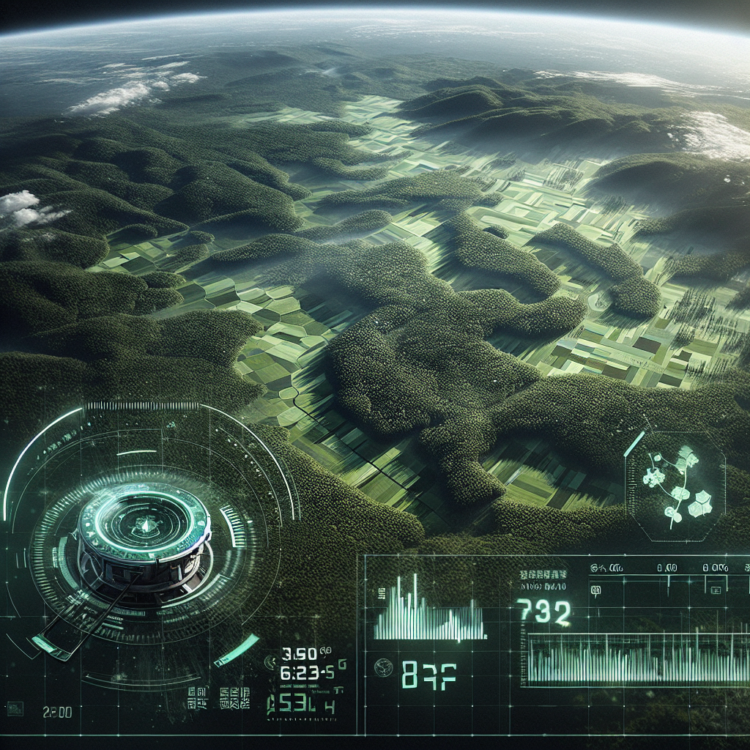Scientists have developed a method to measure forest heights using advanced satellite technology, significantly reducing the need for labor-intensive fieldwork. A recent study published on July 29 in the Journal of Remote Sensing (https://spj.science.org/doi/10.34133/remotesensing.0158)by a team of international researchers leverages high-resolution satellite imagery from China’s GF-7 satellite and historical images from Google Earth to achieve highly precise forest height measurements.
Scientists have developed a method to measure forest heights using advanced satellite technology, significantly reducing the need for labor-intensive fieldwork. A recent study published on July 29 in the Journal of Remote Sensing (https://spj.science.org/doi/10.34133/remotesensing.0158)by a team of international researchers leverages high-resolution satellite imagery from China’s GF-7 satellite and historical images from Google Earth to achieve highly precise forest height measurements.
The GF-7 satellite, known for its very high-resolution (VHR) stereoscopic images, can capture detailed images of the Earth’s surface, including forests. Traditionally, accurate measurement of forest heights using such images required ground control points (GCPs), which had to be collected through time-consuming and costly fieldwork. This presented significant challenges, especially in remote or mountainous areas.
To address this, researchers introduced a novel method called Multi-temporal Averaging of Google Earth (MAGE). This technique uses Google Earth’s multi-temporal historical imagery to gather GCPs without the need for extensive field surveys. By averaging coordinates from multiple historical images, MAGE improves accuracy and simplifies the process.
The study demonstrated this approach in Switzerland,northeast and south China. Using GF-7 stereoscopic images alongside MAGE-derived GCPs, the researchers created a digital surface model (DSM) from the GF-7 images and subtracted the ground surface elevations to extract forest heights.
The results were impressive: The average errors in the coordinates from the MAGE method were less than 2.0 meters. Initially, the forest height measurements had an average error of 12.3 meters, but this improved significantly to just 1.5 meters using the optimized MAGE method. Additionally, the accuracy of the height prediction model improved dramatically, with the correlation between predicted and actual heights increasing from 0.72 to 0.95.
These findings highlight the effectiveness of the MAGE method in improving the geometric processing of VHR imagery, leading to more accurate forest height estimations.
“This advancement holds significant potential for various environmental and forestry applications. It enables more efficient monitoring and management of forest resources, which is crucial for understanding ecological health, carbon storage, and biodiversity conservation,” says Ni Wenjian from the Aerospace Information Research Institute (AIR) of the Chinese Academy of Sciences.
Furthermore, the reduction in the need for fieldwork makes it feasible to conduct large-scale forest height assessments even in hard-to-reach areas, promoting better forest management practices globally, he adds.
The study represents a major step forward in remote sensing technology, demonstrating how innovative use of existing data can overcome traditional challenges in environmental monitoring.
The research was conducted by institutions including the AIRCAS, Heilongjiang Institute of Technology, Chinese Academy of Forestry, and the University of Maryland.
Journal
Journal of Remote Sensing
Method of Research
Imaging analysis
Subject of Research
Not applicable
Article Title
Forest Height Extraction Using GF-7 Very High-Resolution Stereoscopic Imagery and Google Earth Multi-Temporal Historical Imagery
Article Publication Date
29-Jul-2024
COI Statement
The authors declare that they have no competing interests.




